Documento Confidencial
Autor: Daniel Davila Lopez
Daniel Davila Lopez
SQL, Cambio de Collation en Instancia
Documento Confidencial
Oracle, Crear Tablespace TEMP
Crear el nuevo tablespace temporal de la base de datos, al que llamaremos TEMP2.
1.- CREATE TEMPORARY TABLESPACE TEMP2 TEMPFILE SIZE 512M AUTOEXTEND ON NEXT 64M MAXSIZE 4096M;
+DATA1/ALLOCDEV/69C28FCCE5D462C0E053390110AC7BF8/TEMPFILE
CREATE SMALLFILE TEMPORARY TABLESPACE TEMP2
TEMPFILE
‘+DATA1/ALLOCDEV/69C28FCCE5D462C0E053390110AC7BF8/TEMPFILE/TEMPORAL2’ SIZE 536870912 AUTOEXTEND ON NEXT 134217728 MAXSIZE 4294967296;
2.-ALTER DATABASE DEFAULT TEMPORARY TABLESPACE TEMP2;
Poner en estado OFFLINE el antiguo tablespace temporal. En este punto se observa que no se puede hacer:
ALTER TABLESPACE TEMP OFFLINE;
La bd devuelve el error ORA-03217. Este error indica que los datafiles asociados a este tablespace están ONLINE. Para solucionarlo, hay que poner los datafiles del tablespace en OFFLINE. Para hacer esto hacemos:
ALTER DATABASE TEMPFILE ‘+DATA1/ALLOCDEV/69C28FCCE5D462C0E053390110AC7BF8/TEMPFILE/temp.276.973355349’ OFFLINE;
Borrar el antiguo tablespace temporal.
DROP TABLESPACE TEMP INCLUDING CONTENTS AND DATAFILES;
Volvemos a intentar asignar el nuevo tablespace TEMP2 como tablespace por defecto de la base de datos.
ALTER DATABASE DEFAULT TEMPORARY TABLESPACE TEMP2;
Comprobaremos ahora como los esquemas existentes en la base de datos tienen como tablespace temporal por defecto TEMP2 con la siguiente consulta:
select username,temporary_tablespace from dba_users;
Sql, Recuperar Jobs de MSDB Base Data
Documento Confidencial
Bloqueo En Terminales Bancarias
Al ejecutar la aplicación de la terminal bancaria e-pago puede ser bloqueado por el routeador sophos que están instalados en oficinas de crédito y filiales.
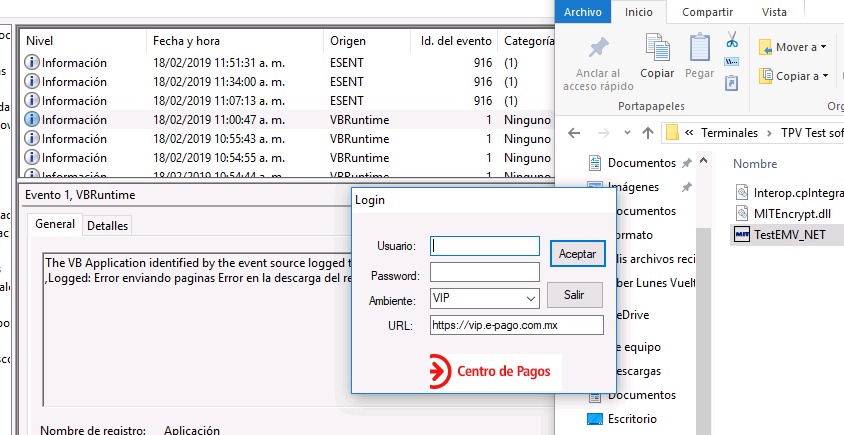
Les mostrara el siguiente error a la hora de hacer pruebas mediante la aplicación (verifique su conexión a Internet antes e continuar)
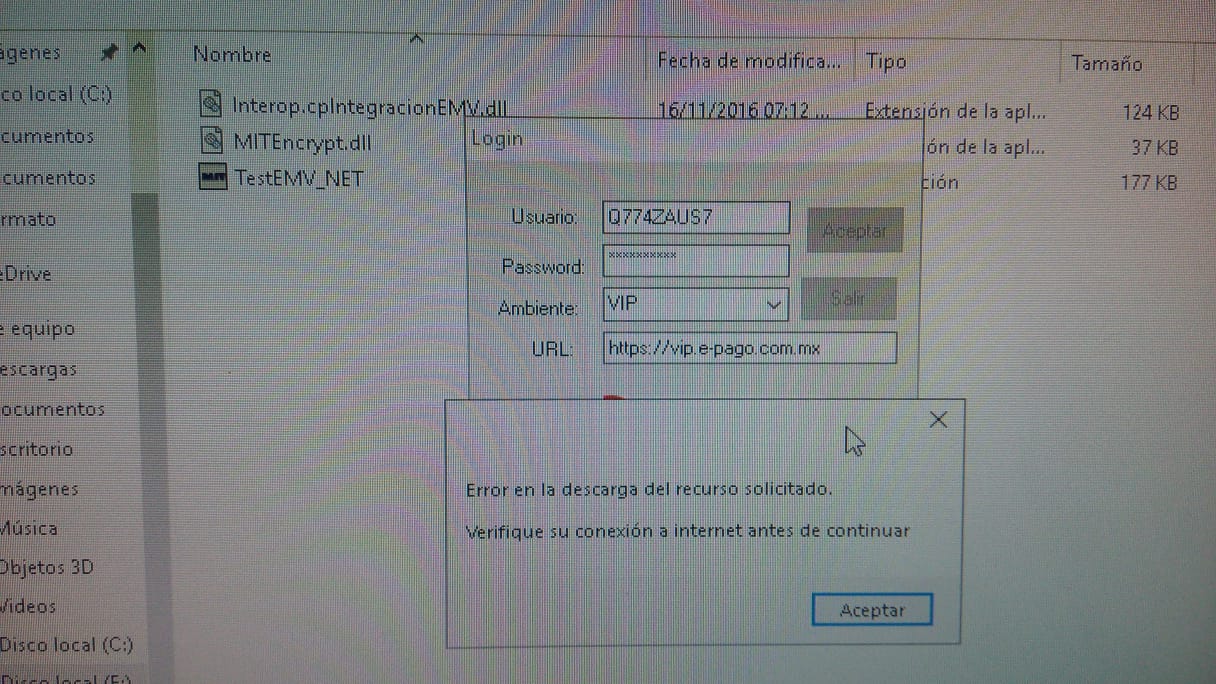
En la aplicación caja les mostrara lo siguiente.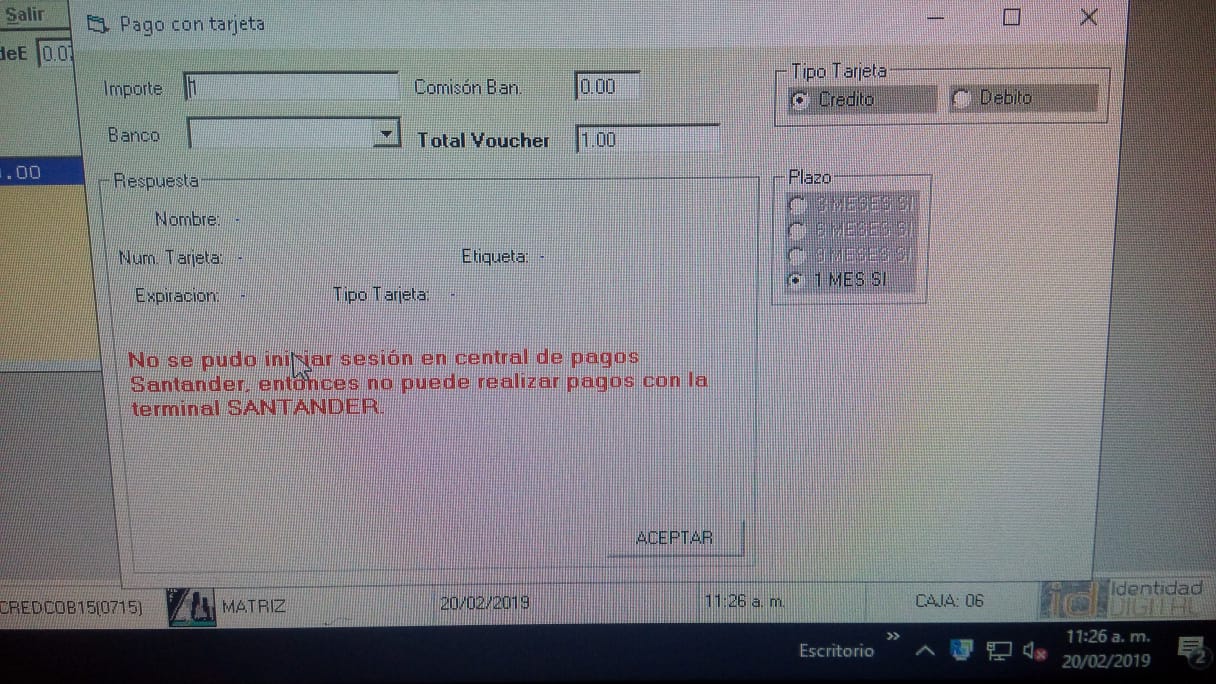
Se tendrá que entrar al router de forma local ingresando su ip en el explorador. para agregar una excepción.
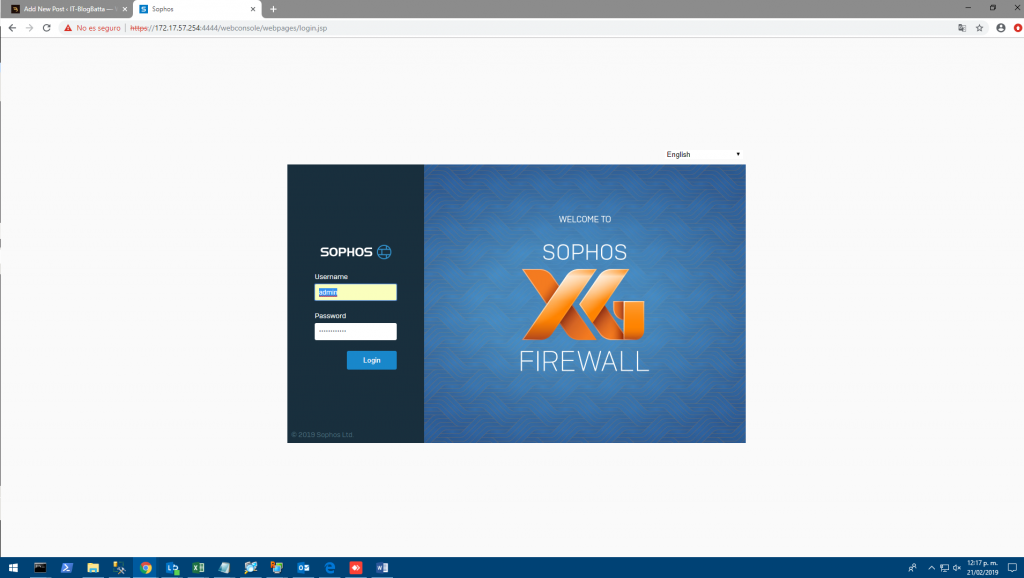
Una vez dentro del router ingresaremos en la parte de la pestaña WEB de lado izquierdo.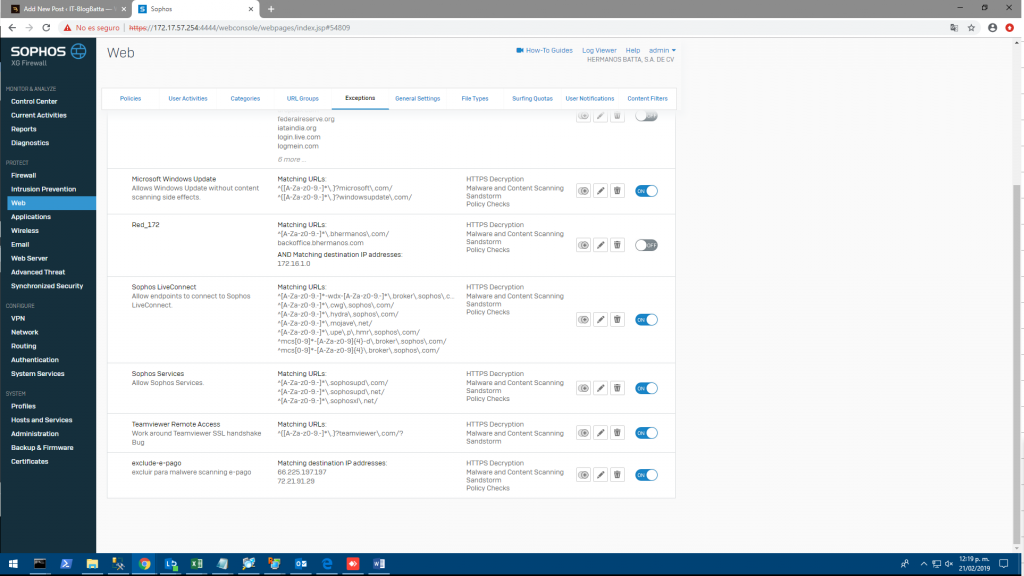
En la parte superior derecha hay un botón de agregar excepción hay que entrar a ese apartado para ingresarle los datos.
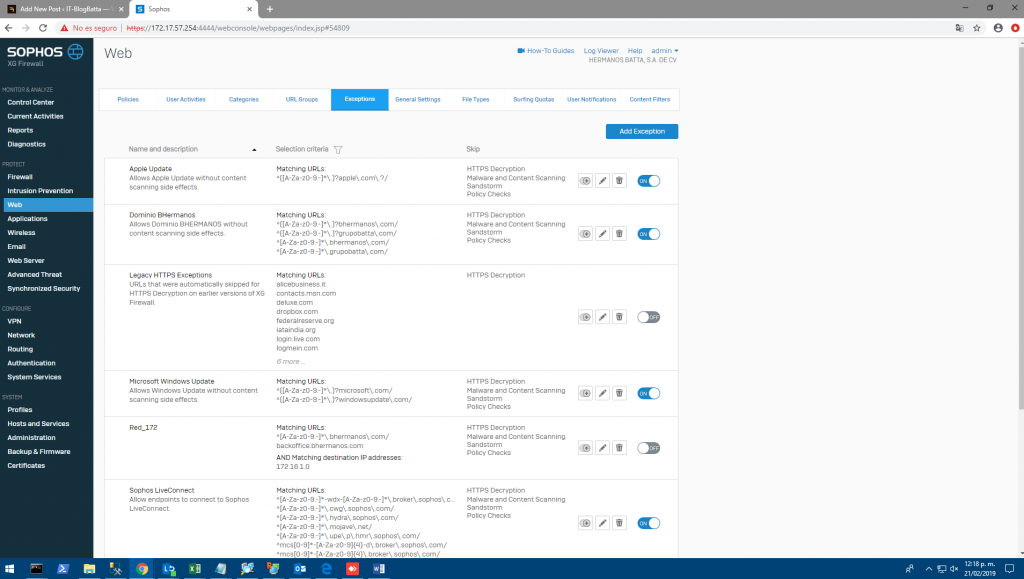
Se ingresaran los siguientes datos ip y seleccionaran las reglas para la correctas configuración de la excepción son las 3 opciones que se ven del lado izquierdo.

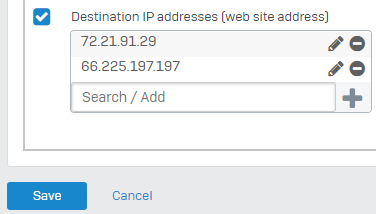
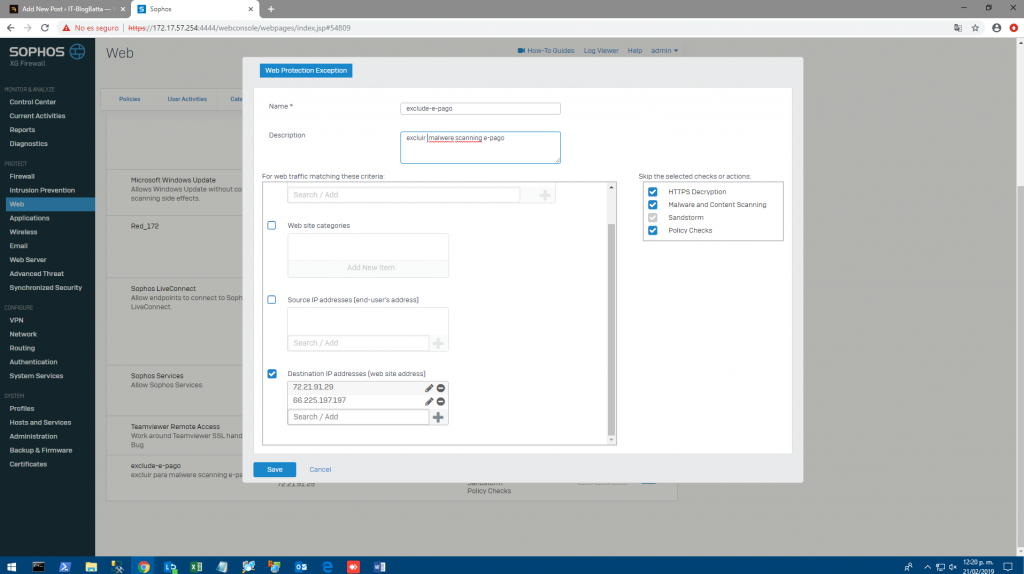
Aplicamos los cambios y realizamos pruebas en la aplicación nuevamente ya debe de estar funcionando correctamente.
Programación de Interfaces Allocation
[wppdf id=’6425′]
ORACLE, Scripts de exportación BD
Documento Confidencial
Documento Confidencial
Terminal Services, Periodo de Gracia
1.- Vamos a “Ejecutar” y accedemos a “regedit.exe”.
2.- Vamos a la entrada “GracePeriod” de HKEY_LOCAL_MACHINE\SYSTEM\CurrentControlSet\Control\Terminal Server\RCM
3.- Botón derecho sobre “GracePeriod”, editar permisos, asignar todos los permisos al usuario Administrador.
4.- Eliminar la clave “GracePeriod” y reiniciar el server.
Oracle DB, Guía Rápida
Documento Confidencial
JDA, Instalación Allocation Cliente
Documento Confidencial

Comentarios